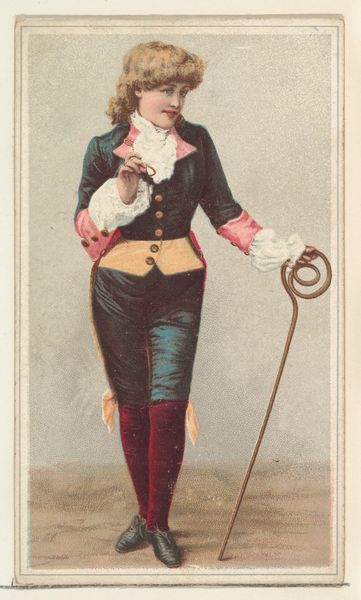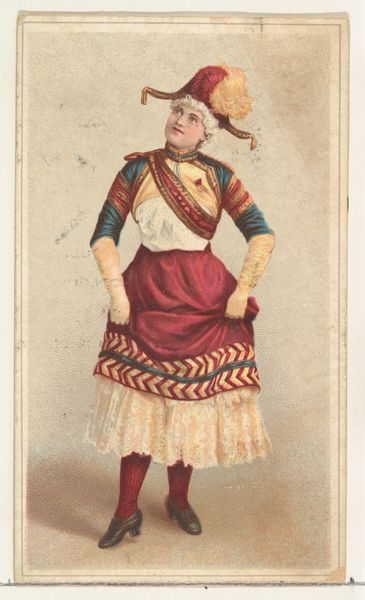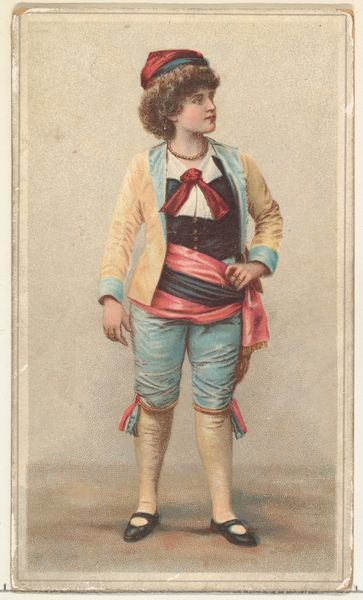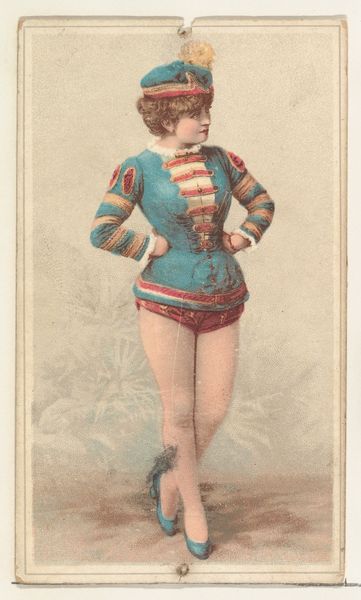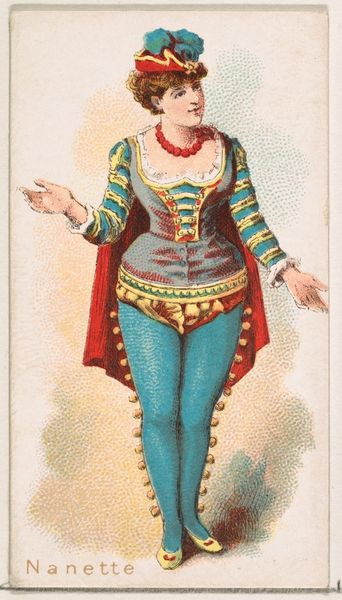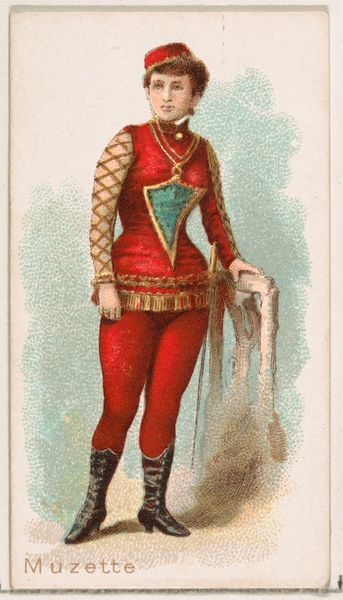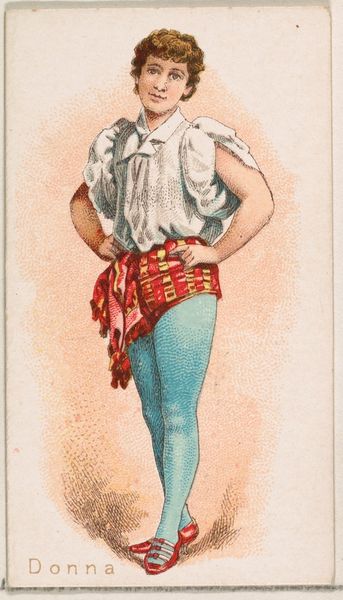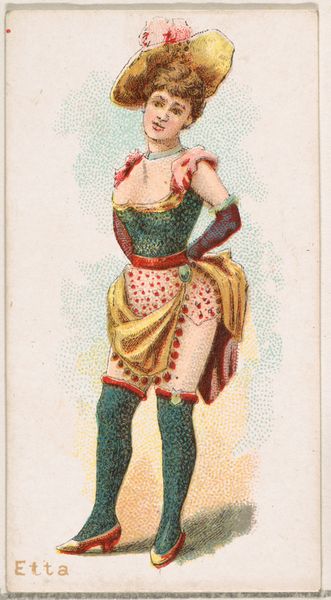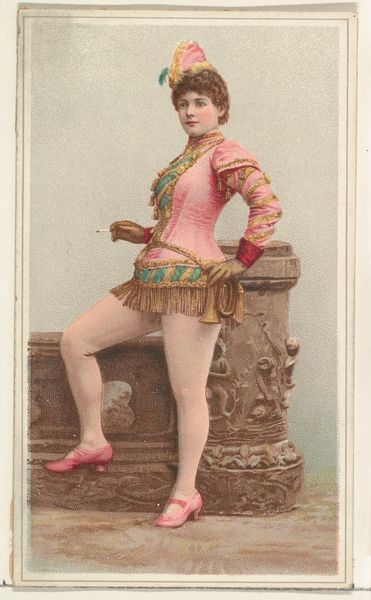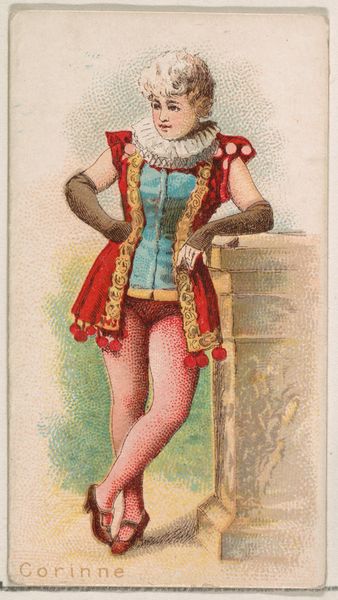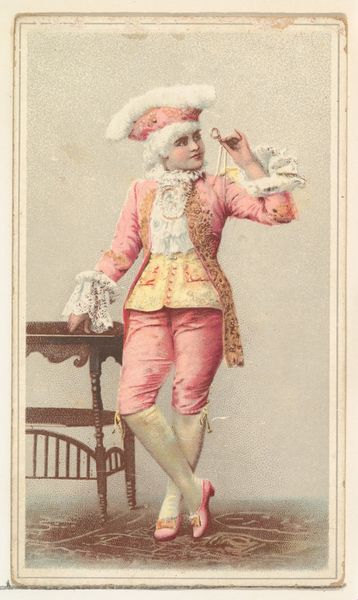
Actress wearing green bodice with dagger, from Stars of the Stage, Second Series (N130) issued by Duke Sons & Co. to promote Honest Long Cut Tobacco 1891
0:00
0:00
#
portrait
#
gouache
# print
#
historical fashion
#
coloured pencil
#
19th century
#
watercolour illustration
Dimensions: Sheet: 4 1/8 × 2 7/16 in. (10.5 × 6.2 cm)
Copyright: Public Domain
Editor: So, this is "Actress wearing green bodice with dagger," created around 1891 by W. Duke, Sons & Co. It was actually a promotional item for Honest Long Cut Tobacco! I’m immediately struck by the woman's confident, almost challenging gaze. What complexities do you see in a seemingly simple promotional image like this? Curator: What I find compelling is how it captures a moment of intersectionality—gender, class, and labor, all mediated through the lens of commercial culture. Tobacco cards, like this one, offered ordinary consumers a glimpse into the world of theater, but what kind of roles were women, specifically, occupying? Editor: That's fascinating. I hadn't considered that this tiny card reflects those societal dynamics so clearly. Was there something subversive about depicting actresses in this way? Curator: Precisely! Think about the time. While actresses gained popularity, they simultaneously challenged social norms. They entered the public sphere, commanding wages and shaping culture. Consider how this image normalizes a woman holding a dagger—is this about strength, vulnerability, or just plain salesmanship? Or can those readings coexist? Editor: It seems like a deliberate provocation. But since this was meant to sell tobacco, maybe it’s less about female empowerment and more about appealing to male fantasies? Curator: I see your point, and there is undeniable commodification happening here. Still, isn't it interesting how gendered marketing reveals and reinforces certain social and political anxieties of that moment? What stories do we tell ourselves today through advertising? Editor: This makes me consider all the layers of representation. It’s definitely more than just a pretty picture to sell tobacco. Curator: Exactly! It is a convergence of commerce, representation, and performance. It highlights how even mundane commercial objects reflect the social and political climate in which they were created.
Comments
No comments
Be the first to comment and join the conversation on the ultimate creative platform.

